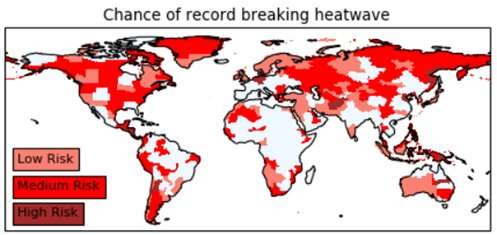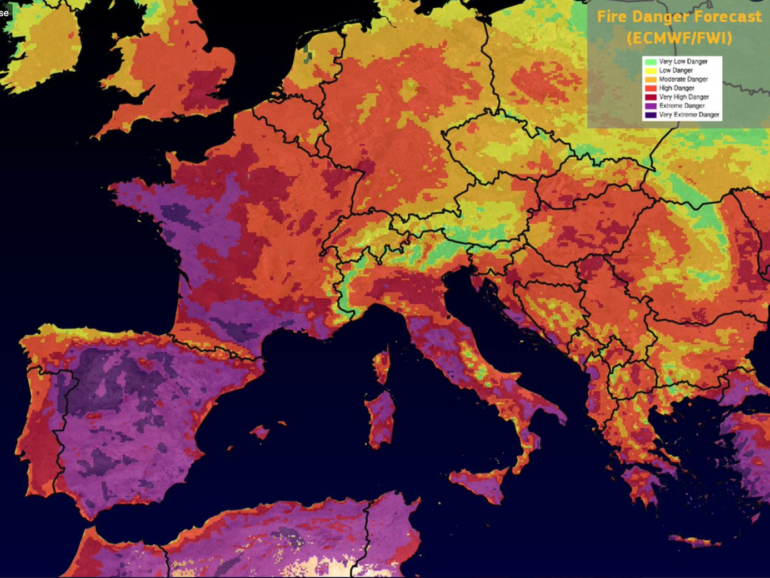A new study has highlighted underprepared regions across the world most at risk of the devastating effects of scorching temperatures.
The University of Bristol-led research, published in Nature Communications, shows that unprecedented heat extremes combined with socioeconomic vulnerability puts certain regions, such as Afghanistan, Papua New Guinea and Central America most in peril.
Countries yet to experience the most intense heat waves are often especially susceptible, as adaptation measures are often only introduced after the event. A high chance of record-breaking temperatures, growing populations, and limited health care and energy provision increase the risks.
Beijing and Central Europe are also on the list of hotspots; if record-breaking heat waves occurred in these densely populated regions, millions of people would be adversely affected.
In light of the findings, the researchers are calling for policy makers in hotspot regions to consider relevant action plans to reduce the risk of deaths and associated harms from climate extremes.
Lead author, climate scientist Dr. Vikki Thompson at the University of Bristol Cabot Institute for the Environment, said, “As heat waves are occurring more often we need to be better prepared. We identify regions that may have been lucky so far—some of these regions have rapidly growing populations, some are developing nations, some are already very hot. We need to ask if the heat action plans for these areas are sufficient.”

Map showing where record breaking heatwaves are most likely. Regions of high risk have a current record return period under 100 years. Regions of low risk have already experienced heatwaves that appeared implausible before they occurred. © University of Bristol
The researchers used extreme value statistics—a method to estimate the return periods of rare events—and large data sets from climate models and observations to pinpoint regions globally where temperature records are most likely to be broken soonest and the communities consequently in greatest danger of experiencing extreme heat.
The researchers also cautioned that statistically implausible extremes, when current records are broken by margins that seemed impossible until they occurred, could happen anywhere. These unlikely events were found to have transpired in almost a third (31%) of the regions assessed where observations were deemed reliable enough between 1959 and 2021, such as the 2021 Western North America heat wave.
Co-author Dann Mitchell, Professor in Atmospheric Sciences at the University of Bristol Cabot Institute for the Environment, said, “Being prepared saves lives. We have seen some of the most unexpected heat waves around the world lead to heat-related deaths in the tens of thousands. In this study, we show that such record smashing events could occur anywhere. Governments around the world need to be prepared.”
Human-induced climate change is causing an increase in the frequency, intensity, and duration of heat waves, which have the potential to lead to thousands more excess deaths globally.
Improving our understanding of where society may not be ready for climate extremes can help prioritize mitigation in the most vulnerable regions. In recognition of the dangerous consequences of climate change, evidenced by the work of its climate experts, in 2019 the University of Bristol became the first UK university to declare a climate emergency.
More information:
Vikki Thompson et al, The most at-risk regions in the world for high-impact heatwaves, Nature Communications (2023). DOI: 10.1038/s41467-023-37554-1
Provided by
University of Bristol
Citation:
Global research reveals countries where record-breaking heat waves are likely to cause most harm (2023, April 26)
